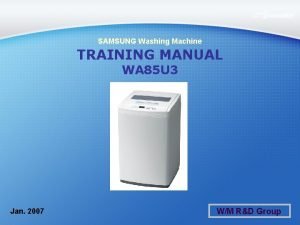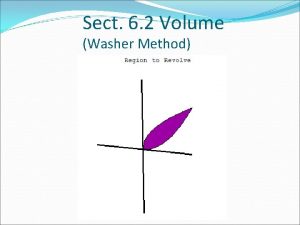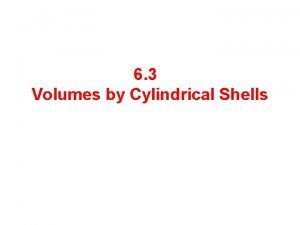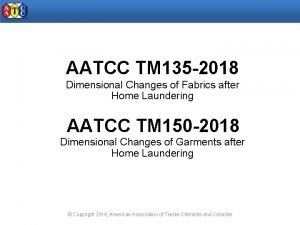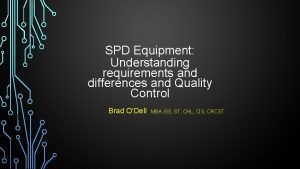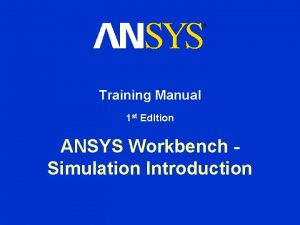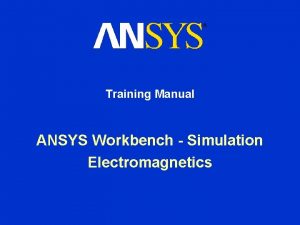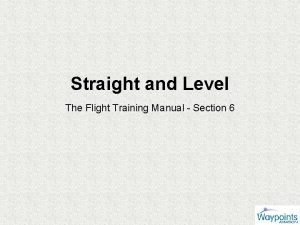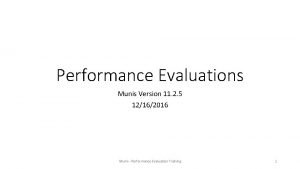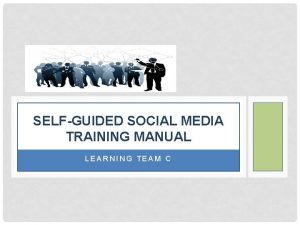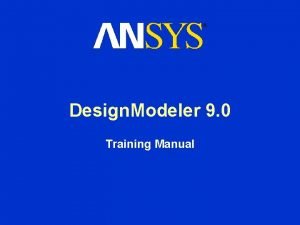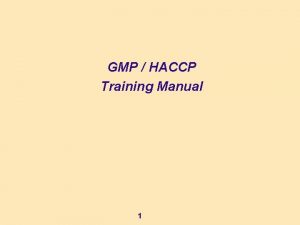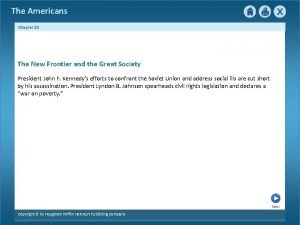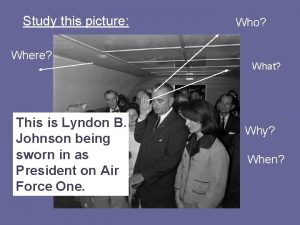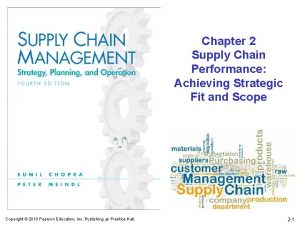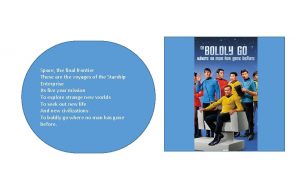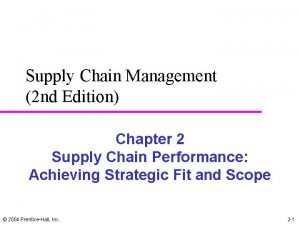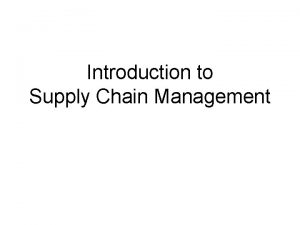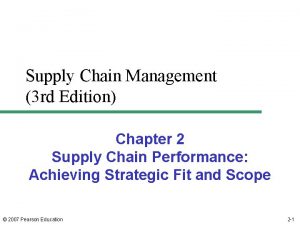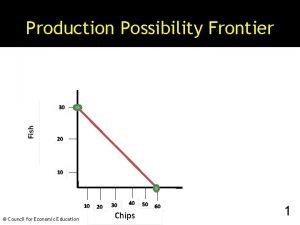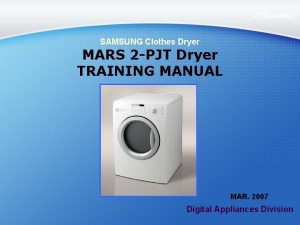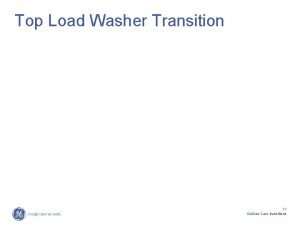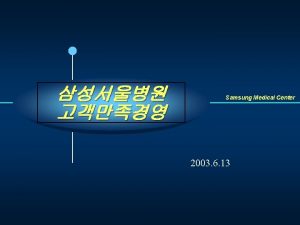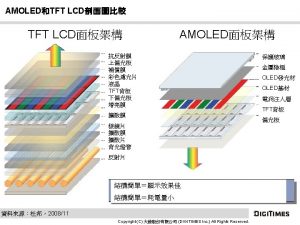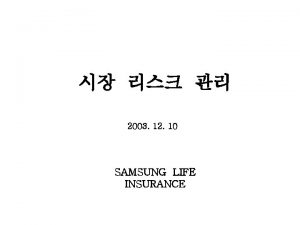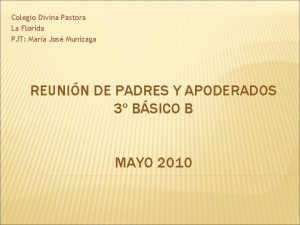SAMSUNG Clothes Washer FRONTIER 4 PJT TRAINING MANUAL






















































































- Slides: 86

SAMSUNG Clothes Washer FRONTIER 4 - PJT TRAINING MANUAL Jan. 2008 Digital Appliances Division

CONTENTS 1. Features 2. Changed Part List 3. Operation 4. Test Mode & Error Check 5. Reference Information 6. Disassembly & Reassembly

1. Product Introduction 1 -1. Concept ▶ V. R. T (Vibration Reduction Technology) : the lowest vibration & noise level ▶ Energy Saving : Highest Energy Efficiency ▶ Stylish Design Main Feature ▶ ▶ Vibration Reduction Technology Extra-Capacity (3. 8 Cu. ft. IEC) Energy-Efficient : MEF over 2. 2 Tender Drum Sub. Feature ▶ ▶ ▶ DD motor Garment + during Washing Delay Start: up to 24 hours Child Lock Ergonomic Dispenser

1. Product Introduction 1 -2. Sales Point & Product Positioning Samsung (WF 218 ANB) Whirlpool (WFW 9200) LG (WM 2233 H) Frigidaire ( AFT 7000) Capacity (Cu. ft) 3. 8 cu. ft 4. 0 cu. ft 3. 8 cu. ft 3. 5 cu. ft MEF 2. 2 (170 k. Wh/year) 2. 05 (182 k. Wh/year) 2. 4 (194 k. Wh/year) 2. 22 (203 k. Wh/year) VRT Yes - - - RPM 1, 150 1000 1100 Motor DD Belt Heater Yes Yes Cycle 10 10 7 7 Display Graphic LED LED Color White/Blue White/Titanium White/Blue Door EGI Coating White (Aluminum) Chrome Silver Spray WXDXH 27 X 31. 1 X 38” 27 X 31. 5 X 38” 27 X 30 1/32 X 39” 27 X 36 Design

1. Product Introduction 1 -3. Specification Grade Main Spec Target Performance Frontier 4 Mars 2 Capacity (Cu. ft. IEC) 3. 8 cu. ft 3. 4 cu. ft Motor type DD Motor Belt MAX RPM 1, 150 1000 VRT™ Yes - Diamond Drum Yes - Heater Yes Washing Cycle # 10 7 Temperature Level # 4 level Delay Wash 24 hrs delay wash Garment + Yes Tilted Drum 10 degree Display Graphic LED MEF 2. 2 1. 92 WCF 3. 8 4. 3 Energy Consumption (k. Wh/year) Spin Noise (Max RPM) Dimension (W*D*H) 170 54 d. BA 27 x 31. 1 x 38 inch 225 56. 5 d. BA 27 x 29. 5 x 38 inch

1. Product Introduction 1 -4. Product Dimension Inch (Cm) Height-Overall (A) 38” (96. 5) Width (B) 27” (68. 6) Depth with Door Open at 90 Degrees (C) 49. 2”(125) Depth (D) 31. 1’’(79)

2. Changed Part List 2 -1. Summary of Change Module Parts Change Tub & Driving Assy Tub, Assy Motor DD Motor Drum Assy Drum Cubic drum Control & Power Assy PCB (w/Micom) Electric Parts, Assy PCB : 2 Sub-PCB Electric Parts : Same as Basic Frame, Bottom Plate, Bracket Spring Same as Basic Inlet Assy Drawer, Water Valve, Assy Pump Same as Basic Outlet Water Valve, Assy Pump Water Valve : Same as Basic Assy Pump : Front Mounted Packing & Accessory Packing, Literature Same as Basic Suspension Damper, Spring Same as Basic Remark Tender drum

2. Changed Part List 2 -2. ASSY-Spin Drum Basic ( Mars 2) Frontier 4 Drum Back Drum Front Lifter Balancer Wrapper • Tender drum (Cubic drum)

2. Changed Part List 2 -3. ASSY-Panel Div Basic ( Mars 2 ) Frontier 4 Shape Assy Panel • Start/Pause Button are separated from Jog Dial. • Symmetrical Window Panel & Option Buttons

2. Changed Part List 2 -4. ASSY-PCB Div Basic ( Mars 2) Frontier 4 Shape Assy Door • LED • Function Button : 8 EA • Option Button : 3 EA • Graphic LED • Function Button : ` 8 EA • Option Button : 3 EA

2. Changed Part List 2 -5. Software Div Basic ( Mars 2) Frontier 4 Display Method LED Graphic LED Course 7 10 Extra Wash Extra Rinse Delay Start Spin Profile Upgrade Max rpm up to 1, 300 Spin Profile Upgrade Max rpm up to 1, 150 Option Performance Remark

3. Instruction of Function 3 -1. Control Panel 1. Digital graphic display Displays the remaining cycle time, all cycle information, and error messages 2. Temperature Selection Button Press and select one of the washing water temperature options. Hot/Cold – For whites and heavy-soiled color-fast items. Warm/Warm – For color-fast items. With this option, only the last rinsing water will be warm. The other rinses will be cold and it is to save energy. Warm/Cold – For moderate-soiled and color-fast items; most wrinkle free items. Cold/Cold – Brightly colored and light-soiled items; washable woolens.

3. Instruction of Function 3 -1. Control Panel 3. Spin Speed Selection Button Press and select its spin speed. High - For underwear, t-shirts, jeans and sturdy cottons. Medium - For jeans, wrinkle free or “wash-and-wear” items and synthetics. Low - For delicate items needing a low spin speed due to its fabric type. No Spin - For extremely delicate items that cannot tolerate any spin. Also, it is to hold water, not being drained.

3. Instruction of Function 3 -1. Control Panel 4. Soil Level Selection Button Press the button to select the Soil Level/washing time. Heavy - For heavy-soiled loads. Medium - For moderate-soiled loads. This setting is a norm for most of loads. Light - For light-soiled loads. 5. Signal Level Selection Button Press the button to control the sound level of the cycle ending signal or turn it off.

3. Instruction of Function 3 -1. Control Panel 6. Select Cycle Option Delay Start - It will be delayed up to 19 or 24 hours in one hour increments. Displayed hours indicates the time at which the wash will be finished. Extra Wash - Add additional washing time to the wash for better stain removal. Extra Rinse - Add an additional rinse at the end of the cycle to more thoroughly remove laundry additives and perfumes.

3. Instruction of Function 3 -1. Control Panel 7. Cycle Selector Turn the rotary dial and select an appropriate cycle for the load type. This will determine the tumble pattern and spin speed for the cycle. Heavy duty - For sturdy, colorfast fabrics and heavy-soiled garments. Normal - For most fabrics including cottons, linens and moderate-soiled garments. Whites - For white fabrics with or without bleach. Wool - For machine washable wool. Load should be under 8 lb. Delicates - For sheer fabrics, bras, lingerie silk and other hand-wash-only fabrics, for best results, use liquid detergent.

3. Instruction of Function 3 -1. Control Panel 7. Cycle Selector Turn the rotary dial and select an appropriate cycle for the load type. This will determine the tumble pattern and spin speed for the cycle. Perm Press - For wash-and-wear, synthetic fabrics, and lightly to normally soiled garments Towels - For bath towels, wash cloths and mats. Sanitize - For Heavily Soiled, colorfast garments. This cycle heats the water to 150℉ to eliminate bacteria Spin Only - Provides a spin to remove more water. Rinse + Spin - Use for loads that need rinsing only or to add rinse-added fabric softener to a load.

3. Instruction of Function 3 -1. Control Panel 8. Start/Pause Selection Button It is to pause and restart the unit. 9. Power Button Press once to turn on the unit and press it again to turn it off. If the washing machine power is left on for more than 10 minutes without any buttons being pressed, the power automatically turns off.

3. Instruction of Function 3 -2. Child Lock ON/OFF If you want to activate or exit Child Lock, press both Soil Level and Signal buttons at the same time for 3 sec. How to Activate: 1. It can be activated during the power-on or the washing. 2. If you activate Child Lock during the laundry operation, all buttons except the Power button are to be locked until you exit Child Lock. 3. The Child Lock lamp will light up. Notice: 1. Instant power failure does not shut down Child Lock. It will keep on working when power comes back on. 2. When buttons do not work except for the Power button, check if Child Lock is on. 3 -3. Garment+ It is possible to add or take out laundry during water supply with the Garment + lamp illuminating. If push Start/Pause button, the door is unlocked immediately. In case of too hot or too much water in washer, the door can not be opened. After closing the door, one more push Start/Pause button to make washing process going on continuously.

3. Instruction of Function 3 -4. Water Flow V 1 V 2 V 3 MAIN(C) BLEACH MAIN(H) V 3 V 2 V 1

3. Instruction of Function 3 -5. Automatic Dispenser The washer has separate compartments for dispensing detergent and color-safe bleach, chlorine bleach and fabric softener. All laundry additives are added to their respective compartments before starting the washer. The Automatic Dispenser MUST ALWAYS be in place before starting the washer. DO NOT open the Automatic Dispenser when the washer is running.

4. Test Mode & Error Check 4 -1. Test Mode Power Off State Quick Test Mode EEPROM Clear Mode Special Test Mode Continuous Power On State (Normal User Mode) Cycle Mode Service Mode Quick Spin Test Mode Cycle Count Check Mode S/W Version Check Mode Fast Time Down Test Mode Board Input Test Mode Diagnostic Code Check Mode Demo Mode Test Mode: Each Test Mode for the Frontier 2 Steam Washer is as follows in the coming pages. The test modes indicated by the red arrows are the modes unable to get an access once the washing cycle has started due to safety reasons.

4. Test Mode & Error Check 4 -1 -1. Quick Test Mode Definition of Quick Test Mode: - Check operation of all LED’s (Verify faulty LED). - Check model and software version. - Check different operating modes (e. g. water valve, motor, door, drain pump, etc. ). How to Enter: - Plug in and turn on the unit. - Press Spin Key, Soil Level and Power Key at the same time.

4. Test Mode & Error Check 4 -1 -1. Quick Test Mode: 1. All LED’s light up and it sends out Beep Sound when it enters into the Quick Test Mode. (Including 7 -Segment) 2. Displays software version for a sec. (Ex. If S/W Version is 23, 7 -Segment will display 6 n and 23 alternately) 3. After displaying the software version, 7 -Segment will display the following information for each model. - F 4 : F 4 is project code - EEEE : Model option Error (Need to replace PCB Assy. ) 4. When project code is being displayed, press the following keys to test various components. - Temp Key : Water Valve Test - Spin Key : Motor Test - Signal Level : Drain Pump Test - Soil Level : Door Lock/Unlock Test Signal Key Soil Level

4. Test Mode & Error Check 4 -1 -1. Quick Test Mode Water Valve Test: 1. To enter the Water Valve Test, press the Temp Key while model information is being displayed during the Quick Test Mode. 2. Each time the Temp Key is pressed, it will cycle through the operations on the left flow chart. 3. If the Temp Key is pressed during All Water Valve OFF, the machine will return to the beginning as shown in the flow chart. 4. The door needs to be secured for the Water Valve to operate. Therefore, the door lock will be on during the water valve operation. 5. If there is any problem with Water Valve, PCB Assy. or Wire Harness, the water valves could not operate. So, to make sure for the water valves to operate, check visually if water comes out with each Water Valve On mode.

4. Test Mode & Error Check 4 -1 -1. Quick Test Mode Door Lock/Unlock Test: Quick Test Mode 1. To check the Door Lock/Unlock operation, press the Soil Level Key while model information is being displayed during the Quick Test Mode. Press Soil Level Key 2. Each time the Soil Level Key is pressed, it will cycle through the Door Lock/Unlock operations on the left flow chart. 3. If the Soil Level Key is pressed during Door Lock and Water Valve, Motor or Drain Pump operation, all of the operations will stop. And, when the Soil Level Key is pressed again, the door will be released. Door Lock Press Soil Level Key 4. If there is any problem with Door Switch, PCB Assy. or Wire Harness, related error codes will be displayed. Door Unlock Press Soil Level Key

4. Test Mode & Error Check 4 -1 -1. Quick Test Mode Drain Pump Test: Quick Test Mode 1. To check the Drain Pump operation, press the Signal Key while model information is being displayed during the Quick Test Mode. Press Signal Key 2. Each time the Signal Key is pressed, it will cycle through the operations on the left flow chart. 3. The Drain Pump operation is independent. Therefore, it will operate regardless of Door Lock/Unlock. Drain Pump On 4. If there is any problem with Drain Pump, PCB Assy. or Wire Harness, the Drain Pump will not operate. So, its operation needs a visual inspection. Press Signal Key Drain Pump Off Press Signal Key

4. Test Mode & Error Check 4 -1 -2. EEPROM Clear Check Definition of EEPROM Clear Mode: - EEPROM initialization. - All course/option settings are to be reset to default values after EEPROM initialization. - When Service arises and it needs PCB replacement, EEPROM should be reset. How to Enter: - The unit needs to be on. - Press Delay Start Key, Spin Key and Power Key at the same time. (Same for all Frontier 2 Steam models. )

4. Test Mode & Error Check 4 -1 -2. EEPROM Reset Mode: 1. EEPROM can be reset once the user enters the EEPROM Clear Mode. 2. If there is any problem with EEPROM, 7 -Segment will display “ FAi. L ”. “Good” will be displayed if everything is OK. 3. PCB assy. needs replacing if “FAi. L” is displayed during EEPROM reset. 4. If PCB assy. is replaced for some reason, EEPROM needs resetting. 5. If problem occurs with Sticky Function, Power Failure Compensation, it may be due to EEPROM. Check EEPROM’s condition at EEPROM Clear Mode.

4. Test Mode & Error Check 4 -1 -3. Continuous Run Mode Definition of Continuous Run Mode: - Will continuously repeat the current cycle until the Continuous Run Mode is cancelled. How to Enter: - Press Delay Start Key and Extra Rinse Key together for 3 sec.

4. Test Mode & Error Check 4 -1 -3. Continuous Run Mode Power on state ( Normal user mode) Power on state + Extra Rinse 3 sec Continuos Run Mode Continuous Run Mode: 1. Press Delay Start + Extra Rinse Key for 3 sec during Power On State (Normal User Mode). 2. Once in Continuous Run Mode, 7 -Segment will blink “cc” and the remaining time in turns. 3. The Continuous Run Mode will repeat the previous cycle until continuous run mode is cancelled. 4. During Continuous Run Mode, press Delay Start + Extra Rinse Key for 3 seconds to return to normal user mode. 7 -segment will no longer display “cc”, but only display the remaining time. 5. If you hold down the Signal and Extra Rinse keys for three (3) seconds in Continuous Cycle Mode, the washing machine enters Service Mode. However, Continuous Cycle Mode is still maintained. At this time, “CC” stops and changes its function to a speed display. 6. If you exit Service Mode after entering it from Continuous Mode, the washing machine returns to Continuous Mode. 7. If power is lost in Continuous Run Mode (that is, when the power plug is disconnected or the Power key is pressed turning the washing machine off), the mode is released when the washing machine is turned on again.

4. Test Mode & Error Check 4 -1 -4. Service Mode Definition of Service Mode: - Service Mode enables service technicians to verify the operation of the washing machine and do troubleshooting. - Service Mode can be entered during all washing cycle without interrupting the cycle except some of test modes. - Various tests can be done with Service Mode. So, troubleshooting can be done based on the resulting diagnostic codes. How to Enter: - To enter the Service Mode, press the Signal and Extra Rinse Keys for 3 seconds or until the unit sends out beeping sounds.

4. Test Mode & Error Check 4 -1 -4. Service Mode Power On State Signal + Extra Rinse (Normal User Mode) 3 Sec Service Mode 5 minutes of inactivity Special Test Mode: 1. The washer must be on to go into the Service Mode. 2. The motor speed will be displayed when started (It displays 0 when the motor does not spin). 3. The present state of the machine will not be changed. (i. e. , the current cycle in progress will not be interrupted and only the display will change) 4. All LED’s will be turned off except the “Door Lock” LED. It will continue to display the condition of the door lock. 5. To exit Special Test Mode, press Signal and Extra Rinse Keys for 3 second again, or Power Key. If no key is operated during Service Mode for 5 minutes, the machine will return to normal user mode.

4. Test Mode & Error Check 4 -1 -5. Quick Spin Test Mode Service Mode Delay start + Spin While it is not in hold speed mode Delay start + Spin 3 Sec While a cycle is not running Quick Spin Test Mode Start / Puse Hold Speed Mode Delay start + Spin for 3 Sec or after 10 minutes Definition of Quick Spin Test Mode: - Quick Spin Test Mode is to do Spin Check. (High RPM) How to Enter: - During Service Mode, press the Delay Start and Spin Keys for 3 seconds to enter Quick Spin Test Mode. - Cannot enter once the washing cycle has started.

4. Test Mode & Error Check 4 -1 -5. Quick Spin Test Mode: As it enters into the Quick Spin Test Mode, it starts spinning and reaches to its maximum RPM. And then, it stays at its maximum speed for 2 minutes before it exits the Quick Spin Test Mode. To hold Quick Spin Test Mode (entering Hold Speed Mode), press the Start/Pause button. If the Start/Pause button is pressed during Quick Spin Test Mode, it will stop accelerating and hold its spinning speed for 10 minutes before going back to Quick Spin Test Mode. Also, to cancel the hold and allow Quick Spin Test Mode to continue, press the Delay Start and Spin Keys together for 3 seconds. If you hold down the Delay Start and Spin keys for three (3) seconds when the washing machine is not in Hold Speed Mode, Quick Spin Mode is exited and Service Mode is restored.

4. Test Mode & Error Check 4 -1 -6. Cycle Count Check Mode Service Mode Signal Cycle Count Definition of Cycle Count Check Mode: - Cycle Count Check Mode is to tally up the number of washings. How to Enter: - To enter the Cycle Count Check Mode, press the Signal Key during Service Mode. Cycle Count Check Mode: 1. Activate the Service Mode in advance. 2. When the Signal key is pressed, the total number of washings will light up and a signal LED will glow (Louder, Softer, Off LED). 3. The maximum number of cycles will be 1999. The counter will roll over to 0 and start counting again after 1999. 4. The counting will be carried out at the end of the normal cycle. 5. To exit the Cycle Count Check Mode, press the “Signal” key again.

4. Test Mode & Error Check 4 -1 -7. S/W Version Check Mode Service Mode Soil Level S/W Version Check Mode Definition of S/W Version Check Mode: - S/W Version Check Mode is to bring up S/W Version information. How to Enter: - To enter the S/W Version Check Mode, press the Soil Level Key during Service Mode. S/W Version Check Mode: 1. Activate the Service Mode in advance. 2. Press the Soil Level Key to bring up its software Version Ex) Generate F 020 for version 05. (F 0 is micom code, 05 is it’s software version 3. To exit the S/W Version Check Mode, press the Soil Level S/W once again. Then, it returns to the Service Mode with motor RPM illuminating.

4. Test Mode & Error Check 4 -1 -8. Fast Time Down Test Mode Service Mode Temp Fast Time Down Test Mode Definition of Fast Time Down Test Mode: - Fast Time Down Test Mode is to forward the program to the next cycle stage. How to Enter: - To enter the Fast Time Down Test Mode, press the Temp key during Service Mode. Fast Time Down Test Mode: 1. Activate the Service Mode in advance. 2. To forward the program to the next cycle stage, press the Temp key. Each stage is located at key points of a complete cycle as follows: - End of Each Fill (Beginning of Wash or Rinse Tumble Session) - Beginning of Drain Session - Beginning of Spin Session (Here, it checks the water level. So, if it is over the reset level, it carries out draining before the spinning. ) - Beginning of Fill Session - Beginning of Bleach Fill - Beginning of Fabric Softener Fill - Every 3 minutes during Wash and Rinse Tumble Session

4. Test Mode & Error Check 4 -1 -8. Fast Time Down Test Mode Marker Fill Water Pre Wash Drain At this point, it checks the water level, and If it is over the reset level, it will carry out draining before the spinning. Spin 3 minutes Fill Water Main Wash 3 minutes Fill Water Pre Valve Drain Spin 3 minutes Fill Water Pre Valve Spin 3 minutes Rinse Bleach Supply Drain Softener Supply Final Rinse 3 minutes Drain Final Spin

4. Test Mode & Error Check 4 -1 -9. Board Input Test Mode Service Mode Extra Wash Board Input Test Definition of Board Input Test Mode: - Board Input Test Mode is to displays a specified input after a key press. How to Enter: - To enter the Board Input Test Mode, press the Extra Wash key during Service Mode. Board Input Test Mode: 1. Activate the Service Mode first. 2. Press the Extra Wash key to start Board Input Test. 3. Water Temperature Display in Celsius Dial the Rotary Cycle Selector to “Heavy Duty” and press the Start/Pause dial. 4. Water Temperature Display in Fahrenheit Dial the Rotary Cycle Selector to “Normal” and press the Start/Pause dial. 5. Door Position (Open/Close) Display Dial the Rotary Cycle Selector to “White” and press the Start/Pause dial : “OP” will illuminate if open, “CL” if closed. 6. Door Status (Lock/Unlock) Display Dial the Rotary Cycle Selector to “Wool” and press the Start/Pause dial : “UL” will illuminate if unlocked, “LO” if locked. 7. Water Level Display (Frequency) Dial the Rotary Cycle Selector to “Delicate” and press the Start/Pause dial : If it illuminates “ 2435”, it indicates 24. 35 k. Hz.

4. Test Mode & Error Check 4 -1 -10. Diagnostic Code Check Mode Delay Start + Signal 3 Sec Service Mode Spin Code & Cycle Count Clear Diagnostic Code Start / Pause Pressing Cycle No. Before making Code Signal Cycle Count Definition of Diagnostic Code Check Mode: - Diagnostic Code Check Mode is to bring up the stored diagnostic codes (reference codes for service technicians). How to Enter: - To enter the Diagnostic Code Check Mode with code “d” flashing, press the Spin Key during Service Mode.

4. Test Mode & Error Check 4 -1 -10. Diagnostic Code Check Mode Board Input Test Mode: 1. Activate the Service Mode first 2. Press the “Spin” key to start Diagnostic Code Check Mode with Code “d” flashing. 3. To cycle through the diagnostic codes (d 1, d 2, d 3~d 9), turn the Rotary Cycle Selector in one direction (either Clockwise or Counterclockwise). 4. Now, when turning the Rotary Select Key in the same direction, it shows diagnostic codes from the latest (d 1). 5. When turning it in the opposite direction, it shows the diagnostic codes in the reverse order. Ex) When it stops at d 5 and turns backward, it shows from d 4 down to “d”. Refer to Diagnostic Code.

4. Test Mode & Error Check 4 -1 -11. Demo Mode How to Enter: To enter the Demo Mode, Press Delay Start + Signal + Extra Wash Key for 5 Sec While the set is on.

4. Test Mode & Error Check 4 -2. Diagnostic Code & Corrective Action NO 1 2 3 LED Diagnostic Display Code nd LO n. F 1 Description The water level fails to drop below the Reset Water Level within 15 minutes. 2 Door fails to unlock after 3 attempts. 3 When the filling continues for more than 16 minutes or there is no change of water level for 3 minutes. Corrective Action Go to “ Will Not Drain” Troubleshooting Section. Go to “ Will Not Unlock” Troubleshooting Section. Go to “ No Water Fill” Troubleshooting Section.

4. Test Mode & Error Check 4 -2. Diagnostic Code & Corrective Action NO 4 5 6 LED Diagnostic Display Code FL LE OE Description Corrective Action 4 Door fails to lock after 3 attempts. Go to “ Will Not Lock” Troubleshooting Section. 8 Water Level Sensor Trouble. (When the input signal from the water level sensor is out of range, the unit will send out beeping sounds and halts the cycle. ) Go to “No Water Fill” Troubleshooting Section. E A fault is detected in the water level sensor. Data (frequency) shows the water level is at or above the overflow water level. (When this condition is detected, the machine will automatically starts draining water until the water level falls below the overflow water level) First check to see that all of water valves are not stuck. If water valves are OK, check water level sensor.

4. Test Mode & Error Check 4 -2. Diagnostic Code & Corrective Action NO 7 8 9 LED Diagnostic Display Code dc - E 2 10 Description Unbalance or cabinet bump is detected during final spin, which prevents the drum from spinning over 400 rpm. (Never exceeds 400 RPM due to unbalanced load) Corrective Action Go to “Wet Clothes” Troubleshooting Section. 11 EEPROM Fault. (Program settings are being reset. ) Go to “EEPROM Clear Mode” If display shows “FAi. L”, Replace Machine Control Board. 15 Jammed Key. (When key input signals are coming out for more than 30 seconds, it is regarded as a jam. ) Check all of keys. If A key is sensed to be pressed, all keys will do not respond.

4. Test Mode & Error Check 4 -2. Diagnostic Code & Corrective Action NO LED Diagnostic Display code Description Corrective Action 10 d. L 18 Door is detected as open when the motor is operating. Check for loose wire connections. Go to “Quick Test Mode” and then do Door lock/Unlock Test and Motor Test. 11 d. S 22 Door is detected as open while it is trying to lock the door. Go to “Quick Test Mode” and then do Door Lock/Unlock Test 12 b. E 25 Motor hall sensor signals come out without motor operation. Replace Machine Control Board.

4. Test Mode & Error Check 4 -2. Diagnostic Code & Corrective Action NO 13 LED Diagnostic Display code t. E 29 Description Corrective Action Abnormal high/low temperature or resistance (Thermal sensor or PBA) resistance. Go to “ Board Input Test” and check Water Temperature. Check loose or pinched wires. Replace PCB or thermistor. Evaluate wire harness for loose or unhooked connections. Go to “ Quick Test Mode” and test Motor. 14 E 3 2 E MICOM is attempting to drive the motor but is not getting any response signals from the hall sensor. Visual check shows motor is not running. (Locked, Defective Hall Sensor or Overload) 15 Sr 34 System Relay (Main Relay) Failure. (PCB does notice the relay operation when there should be. ) Replace PCB.

4. Test Mode & Error Check 4 -2. Diagnostic Code & Corrective Action NO 16 LED Diagnostic Display code Hr 36 Description Heater Relay Failure (No Heater Relay Check Signal) 17 3 E 3 E Over-current is detected. Motor won’t turn. (IPM detects over-current. ) 18 2 E 91 Voltage for motor control bus is over specified limit. Corrective Action Replace PCB Evaluate wire harness for loose or unhooked connections. Go to “ Quick Test Mode” to test Motor. Replace PCB

4. Test Mode & Error Check 4 -2. Diagnostic Code & Corrective Action NO 19 LED Diagnostic Display code 2 E 92 Description Voltage for motor control bus is under specified limit. 20 7 E 7 E 21 PF - It occurs when there is power failure during the washing. (“PF” is not an error. It is to inform the user of power failure. ) - Sd is detected during the washing session. (“Sd” is not an error. If the washer is in suds period, “Sd” will light up instead of remaining time. ) 22 Sd Silver Care Kit (Main PCB) Failure. Corrective Action Replace PCB Main PCB & Wireharness - Guide a user to reduce amount of detergent usage.

5. SVC Information 5 -1. Troubleshooting Problem Will Not Start What To Do. Plug the unit into the wall outlet. Check for proper voltage. • Check fuse or reset circuit breaker. • Push any key to turn on the washer and press the Start/Pause key to run the washer. • Close door and push the Start/Pause key to run the washer. • Check if washer is in a pause, soak or suds process. Wait briefly and it may start. (If the washer is in suds period, Suds will light up instead of remaining time. ) • Check for restricted drain system. (If there is electrical problem in drain system, “nd” error will occur after 15 minutes. ) • Check Water Supply. • Check the line or water valve screen filter. • Check if PCB connectors are assembled properly. • Check if CN 5, CN 6 terminals on PCB are in good condition. (Refer to PCB Connector Check. ) • Replace PCB.

5. SVC Information 5 -1. Troubleshooting Problem Has no water Or not enough water. . What To Do. Perform Quick Test Mode. Check all of Water Valves visually. Or, check Water Valves with hands on them. When they work, you can feel vibrations. If not, no vibrations. • Check if water taps are turned on fully. • Check Water Valves and Water Level Sensor (Refer to PCB Connector Check) • Check if there is any kink in inlet hoses. • Check if inlet screens are clogged up. • Check if water has enough pressure. If so, find out its contributors. • Check if there is any frozen area in the unit (Drain Hose, etc) • Measure the resistance of Water Valve Coil. (It should read 1. 18 K ohms. Check Pin#1 of CN 5 and PIN#1, 2, 3, 4 of CN 10) • Check Pressure S/W and PCB for loose connections. (Refer to PCB Connector Check. )

5. SVC Information 5 -1. Troubleshooting Problem Has detergent remains In the automatic dispenser After the wash cycle is complete. What To Do . Make sure your Washer is running with sufficient water pressure. . Make sure the Detergent Selector dial is in the upper position when using granular detergent.

5. SVC Information 5 -1. Troubleshooting Problem Vibrates or is too noisy What To Do Check if the washer is leveled and the lock nuts are tightened up on the bottom plate. • Check if all of the shipping bolts and spacers are removed from the back panel. • Check if load is big enough and there is no unbalance. If there is not enough load, put in a few towels to balance it. • Check if the motor is fastened enough. • Remove various trouble contributors (such as dust coat on the floor). . Check if Washer is touching other object.

5. SVC Information 5 -1. Troubleshooting Problem Stops What To Do • Plug cord into live electrical outlet. . Check fuse or reset circuit breaker. . Close door and press the Cycle Selector dial to start your Washer. For your safety, your Washer will not tumble or spin unless the door is closed. Before your Washer starts to fill, ti will make a series of clicking noises to check the door lock and do a quick drain. . There may be a pause or soak period in the cycle. Wait briefly and it may start. . Check screens on inlet hoses at the faucets for obstructions. Clean screens periodically.

5. SVC Information 5 -1. Troubleshooting Problem Fills with the wrong temperature water. What To Do. Turn both faucets on fully. Make sure temperature selection is correct. . Make sure hoses are connected to correct faucets. Flush water lines. . Check the water heater. It should be set to deliver a minimum 120℉(49℃) hot water ate the tap. Also check water heater capacity and recovery rate. . Disconnect hoses and clean screens Hose filter screens may be plugged. . As your Washer is filling, the water temperature may change as the automatic temperature control feature checks incoming water temperature. This is normal. . While your Washer is filling, you may notice just hot and/or just cold water going through the dispenser when cold or warm wash temperatures are selected. This is a normal function of the automatic temperature control feature as you Washer determines the temperature of the water.

5. SVC Information 5 -1. Troubleshooting Problem Will Not Unlock What To Do • Check if the door is being pushed out, which may keep it from unlocking. • Door locks itself when the water level is too high (Drain the unit). • Check the following with Board Input Test Mode. Water Level (frequency): Over 23. 80 KHz. → If so, refer to “Will Not Drain”. Temperature (Inside Drum): Higher than 60℃/140℉. → If so, wait until it drops. When everything is normal, check PCB connectors and Door Lock Switch. • Drain manually after removing the plastic drain hose holder. • Display shows “LO”. Turn off and on the unit. If “LO” keeps illuminating, check PCB and Door Lock Switch. • Read Lock Switch and PCB (CN 10 & CN 7). (Refer to PCB Connector Check. ) • Perform Quick Test Mode. Check Door Lock. Check the output voltage of Door Lock Coil. If it reads 120 V, change Door Lock Switch, and if not, change PCB. (Refer to PCB Connector Check. )

5. SVC Information 5 -1. Troubleshooting Problem Will Not Lock What To Do • Door is not aligned or closed properly. • Perform Quick Test Mode. Check Door Lock. Check the output voltage of Door Lock Coil. If it reads 120 V, change PCB, and if not, change Door Lock Connector. (Refer to PCB Connector Check. ) • Read Lock Switch and PCB (CN 10). (Refer to PCB Connector Check. )

5. SVC Information 5 -1. Troubleshooting Problem Will Not Spin What To Do • Make sure to close the door completely. • Check for water left inside the washer. If so, go to “Will Not Drain”. • Perform Quick Test Mode or Quick Spin Test. Does the washer spin? (Before the test, empty the unit inside. ) If it doesn’t tumble after the above, change PCB. When the problem persists, change the motor. • Check for loose connections at PCB, Water Level Sensor, Motor, Hall Sensor Wire Harness. (CN 8, CN 9, CN 3) (Refer to the Component Testing Procedure. ) • Check motor windings resistance. (CN 9 Pin 1&3 = 11. 6 ohms (at ± 7% 20°C/68°F), Pin 1&2 = 11. 6 ohms (at ± 7% 20°C), Pin 2&3 = 11. 6 ohms (at ± 7% 20°C))

5. SVC Information 5 -1. Troubleshooting Problem Will Not Drain What To Do • Check for any kink on the drain hose. If any, straight it out. • Check for any restriction in the drain hose. • Close the door and press the Rotary Cycle Selector. For safety reasons, the washer does not tumble or spin with the door open. • When it is freezing outside, check if it is frozen inside the drain hose. • Check if the water level signal input is correct. Go to Board Input Test Mode. • Go to Quick Test Mode and do Drain Pump Test. • Check if there is any twist in the hose (the one between Tub and Drain Pump). • Check if it reads AC 120 V at the pump when a spin cycle is selected. • Read the winding resistance of the pump motor. (14. 2 7% Ohms) • Check the pump at CN 10 (Pin 6) on PCB. It should read AC 110~120 V. (Refer to PCB Connector Check)

5. SVC Information 5 -1. Troubleshooting Problem Load is too wet at the End of the cycle. What To Do • Unbalance due to not enough load. Put additional load. • Due to excessive suds by using general detergent. Use HE (High-Efficiency) or reduce its quantity. • Low Spin Speed or Drain Only was selected. • Go to “ Will Not Spin”.

5. SVC Information 5 -1. Troubleshooting Problem Leaks water. What To Do • Make sure there is no leakage in the inlet hose connections. • Check for rubber gasket damage due to over-tightening. • Check standpipe for leakage. Check if the standpipe contributes the leakage. If so, the standpipe is under-capacity. In this case, make sure to seal its opening tightly. • Check waster hose connections. (Water Supply/ Drain/ Dispenser Hose & Clamp) • Check if rubber boot is water-tight. • Check for any kink on the water hoses.

5. SVC Information 5 -1. Troubleshooting Problem Excessive Suds What To Do • Go to “Will Not Drain” and “Will Not Spin” and check the draining. • Check PCB and Drain Pump for any loose wire connection. • Perform Quick Test Mode or Board Output Test to drain. • Use HE (High-Efficiency) or low sudsing detergent specially formulated for front load washers. • Reduce the amount of detergent for that specific load size and soil level. Keep in mind that towel creates more suds generally. • Reduce the amount of detergent when water is soft, or laundry is small or lightly soiled. • Do one more washing cycle with cold water and a table spoon of salt without detergent.

5. SVC Information 5 -1. Troubleshooting Problem What To Do No Key Operation • Each washing selection deactivates some buttons. • Child Lock is being activated. To exit, hold down Soil Level Key and Signal Key simultaneously until it sends out a beeping sound. • When "End“ illuminates on the display, only the Power button works.

5. Reference Information 5 -2. PCB Connector Check

5. Reference Information 5 -2. PCB Connector Check Thermistor Check Voltage at Pin #6 and #3 of CN 3 Tester Check = DC 2. 5 V If it reads 5 V, Check if its connector is engaged properly Door Switch Check Voltage at Pin #6 and #4 of CN 3 When Door Open = DC 5 V When Door Close = DC 0 V Door Lock Check Voltage at Pin #1 of CN 5 and Pin #7 of CN 10 Check Voltage at Pin #1 of CN 5 and Pin #2 of CN 7 When Door Lock = AC 120 V Door Unlock Check Voltage at Pin #1 of CN 5 and Pin #8 of CN 10 When Door Unlock = AC 120 V Drain Motor Check Water Sensor Check Voltage at Pin #1 of CN 5 and Pin #6 of CN 10 When Drain Motor operates = AC 120 V Check Voltage and Frequency at Pin #6 and #7 of CN 3 Reset water level = DC 2. 5 V, 25. 8 KHz Check Voltage and Frequency at Pin #6 and #8 of CN 3 Reset water level = DC 2. 5 V, 25. 8 KHz Water Valve Check Sum Sensor Check AC Power Check Voltage at Pin #4 and #2 of CN 8 Tester Check = DC 0 V or 3. 75 V Check Voltage at Pin #4 and #3 of CN 8 Tester Check = DC 0 V or 3. 75 V Motor Check Resistance at Pin #1 and #2 of CN 9 = 11. 6Ω Resistance at Pin #1 and #3 of CN 9 = 11. 6Ω Resistance at Pin #2 and #3 of CN 9 = 11. 6Ω Check Voltage at Pin #1 of CN 5 and Pin #1, 2, 3, 4 of CN 10 When each valve operates = AC 120 V Check Voltage at Pin #1 and #3 of CN 5 Check Voltage at Pin #1 of CN 5 and Pin #1 of CN 6 Tester Check = AC 120 V Heater Relay Check Voltage at Pin #1 of CN 5 and PIN #2 of RY 9 When Heater Relay operates = AC 120 V

5. Reference Information 5 -3. Wiring Diagram

5. Reference Information 5 -4. Components Check Door S/W Water Sensor Water Valve Read resistances at any two of the three terminals : Should be 14 Ω Slip out the connectors and read its resistance : Should be 1. 14 Ω at each valve Common Measure resistance between the center terminal (Common) and each of the outer two terminals : Should be 60 Ω

5. Reference Information 5 -4. Components Check Drain Motor Plug out the connector and read resistance at the terminals on Drain Pump : Should be 13. 7 Ω Drum Motor Plug out the connector and read resistances at any two of the three terminals on Motor : Should be 11. 6 Ω Heater & Thermistor <Heater> Read resistance at the squares : Should be 15. 8 Ω <Thermistor> Plug out the connector and read its resistance; Should be 14 Ω

5. Reference Information 5 -5. Schematic Diagram (Main PCB)

5. Reference Information 5 -5. Schematic Diagram (Sub PCB)

5. Reference Information 5 -6. Q & A Q. How long does it take for the door to unlock? A. It takes approximately 2 -3 seconds for the door to unlock. A. When “End” is displayed, the Power button should be pressed or door should be opened before selecting another cycle. The display will show “End” until Q. The cycle is complete and “End” is displayed. How do I set another cycle? washer is turned off. To turn off washer, the Power button should be pressed or the door should be opened Q. What should I do when Information Code (“dc”) lights up? A. When the Information Code is displayed, press the Start/Pause dial and then restart the cycle. For more information, refer to the Owner’s Manual Q. There is a small amount of water left in Detergent Drawer after the load is complete. Is this normal? A. It is normal for a small amount of water remaining in Detergent Drawer after it completes washing. Bleach is usually flushed out into the tub at the beginning of the washing. Also, its compartment is washed again during the following rinse cycle, removing any remnants.

5. Reference Information 5 -6. Q & A Q. When I went back to my washer, it was turned off. What happened? A. Power button may have been accidentally bumped or pushed. Reset the cycle and start the washer. Make sure the unit is plugged into a live electrical outlet. Check house fuse or circuit breaker. Q. The washer door gets locked after a power failure. How can I open it? A. If the power fails while the door is locked, the door will remain locked until the power comes back on. If the power comes back on while the door is still locked, the cycle will resume where it left off. If the door is unlocked, “PF” will display and the washer will pause. Press Power Off and restart the cycle. Q. The washer door does not unlock when there is water in the tub. How can I open it? A. The water must be drained from the tub for the door to be opened. Set the rotary dial to Spin Only and press the Start/Pause dial. The door will open 2 -3 seconds after the Spin or Drain cycle is completed.

6. Disassembly & Reassembly Part Disassembling and Repairing the Rear Motor Figure Description

6. Disassembly & Reassembly Part Disassembling and Repairing the Rear Motor Figure Description

6. Disassembly & Reassembly Part Separating the Heater at the Bottom Front Figure Description

6. Disassembly & Reassembly Part Separating the Top Cover and Control Panel (Check Main-PCB and Sub-PCB) Figure Description

6. Disassembly & Reassembly Part Separating the Top Cover and Control Panel (Check Main-PCB and Sub-PCB) Figure Description

6. Disassembly & Reassembly Part Disassembling and Reassembling the Door Part Figure Description

6. Disassembly & Reassembly Part Disassembling the Front Cover/Front Frame (Check the Door Lock S/W) Figure Description

6. Disassembly & Reassembly Part Disassembling the Front Cover/Front Frame (Check the Door Lock S/W) Figure Description

6. Disassembly & Reassembly Part Disassembling and Repairing the Water Supply Valve Figure Description

6. Disassembly & Reassembly Part Disassembling and Repairing the Water Level Sensor. Figure Description

6. Disassembly & Reassembly 1. Disassemble the Front-Frame Part Disassembling the Pump Motor Part Figure Description

6. Disassembly & Reassembly Part Disassembling the Tub Figure Description

The End
 Pjt project
Pjt project Frontier detectors for frontier physics
Frontier detectors for frontier physics Samsung washing machine user manual
Samsung washing machine user manual Disk and washer method
Disk and washer method Oa air washer
Oa air washer Meritech hand washer
Meritech hand washer Disk vs shell method
Disk vs shell method Gettler test in drowning
Gettler test in drowning A window washer attempts to lean
A window washer attempts to lean Preliminary rifle instruction
Preliminary rifle instruction Disk and washer method
Disk and washer method Aatcc 135 washing method
Aatcc 135 washing method Steris adjustable height sink
Steris adjustable height sink Mrs washer
Mrs washer Samsung magicinfo training
Samsung magicinfo training Ansys training manual
Ansys training manual Anna bieberdorf
Anna bieberdorf Insurance agent training manual
Insurance agent training manual Altar worker job description
Altar worker job description Ansys workbench manual
Ansys workbench manual Bartender training manual doc
Bartender training manual doc How to maintain straight and level flight
How to maintain straight and level flight Munis training manual
Munis training manual Tier.net training manual
Tier.net training manual Pepperball hotshot
Pepperball hotshot Sits:vision training manual
Sits:vision training manual Social media training manual
Social media training manual Kairos program manual
Kairos program manual Training manual design
Training manual design Tier.net training manual
Tier.net training manual Infor eam training manual
Infor eam training manual Agresso instructions
Agresso instructions Sits:vision training manual
Sits:vision training manual Haccp manual
Haccp manual Financial coaching training manual
Financial coaching training manual Ansys training manual
Ansys training manual Frontiern
Frontiern New frontier political cartoon
New frontier political cartoon Chapter 20 section 2 the new frontier
Chapter 20 section 2 the new frontier New frontier camelot
New frontier camelot Chapter 28 the new frontier and the great society
Chapter 28 the new frontier and the great society Obsolescent frontier civilization
Obsolescent frontier civilization New frontier jfk
New frontier jfk New frontier camelot
New frontier camelot Ideologies examples
Ideologies examples The production possibilities frontier
The production possibilities frontier Dental auxiliary meaning
Dental auxiliary meaning Mercator url frontier
Mercator url frontier Closing the frontier apush
Closing the frontier apush Startegic fit
Startegic fit Chapter 15 the new frontier and the great society lesson 1
Chapter 15 the new frontier and the great society lesson 1 Forbidden frontier cedar point
Forbidden frontier cedar point The west settlement of the last frontier
The west settlement of the last frontier Space the final frontier these are the voyages
Space the final frontier these are the voyages Frontier trail middle school
Frontier trail middle school Utility possibilities frontier
Utility possibilities frontier Quantum computing
Quantum computing Obsolescent frontier civilization diagram
Obsolescent frontier civilization diagram Is copper harder than steel
Is copper harder than steel Changes on the western frontier
Changes on the western frontier Artificial intelligence the next digital frontier?
Artificial intelligence the next digital frontier? Draw ppc
Draw ppc Efficient frontier case study
Efficient frontier case study Frontier placements
Frontier placements New frontier vs great society
New frontier vs great society Dawes severalty act of 1887
Dawes severalty act of 1887 The bitter conflict between whites and indians intensified
The bitter conflict between whites and indians intensified Implied uncertainty spectrum
Implied uncertainty spectrum The new frontier and great society
The new frontier and great society Cost responsiveness efficient frontier
Cost responsiveness efficient frontier Cost-responsiveness efficient frontier
Cost-responsiveness efficient frontier Energy frontier
Energy frontier Roduction possibilities frontier
Roduction possibilities frontier Frontier meaning
Frontier meaning Conventional/stylized design
Conventional/stylized design Frontier of knowledge
Frontier of knowledge New frontier vs great society
New frontier vs great society Cost-responsiveness efficient frontier
Cost-responsiveness efficient frontier Sharpe single index model
Sharpe single index model Frontier economics
Frontier economics Frontier molecular orbital theory
Frontier molecular orbital theory Kennedys new frontier
Kennedys new frontier Turner thesis definition
Turner thesis definition Programming next frontier software development
Programming next frontier software development Production possibility frontier model
Production possibility frontier model Rock uk frontier centre
Rock uk frontier centre Future of work at the human-technology frontier
Future of work at the human-technology frontier


